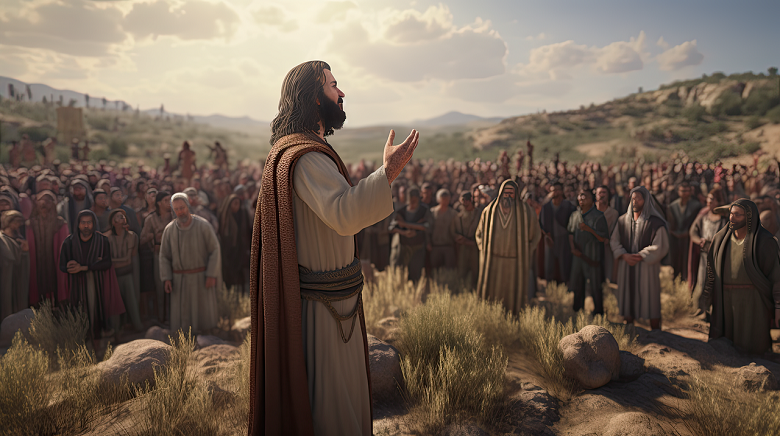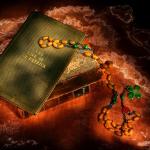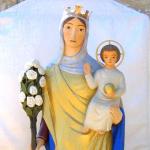The Bible includes only four gospels. Can we learn anything new from gospels that were not included? Scholars look at the non-canonical gospels with great interest. The Coptic Gospel of Thomas might cast new light.

Where did the gospels come from?
Tracing the history of the various stories of Jesus from the first few centuries CE has been a focus of scholars for many decades. So much scholarship exists that we will not attempt to cover all those bases but we will take a brief look at gospels in general and at the difference between canonical gospels (gospels included in most versions of the Holy Bible) and non-canonical gospels (also called the apocryphal gospels).
The canonical gospels
The four canonical gospels, the Books of Matthew, Mark, Luke and John were written in Greek. The Gospel of Mark probably dates from c. 66–70 CE, Matthew and Luke around 85–90 CE, and John 90–110 CE.
During and following the lifetime of Yeshua, his followers believed that the end of days was near so that there was little motivation to write accounts of Yeshua’s life and work since everyone expected the end to come soon. The gospels seem to have arisen out of a variety of places and processes.
- Oral traditions – stories and sayings passed on largely as separate self-contained units, not in any order;
- Written collections of miracle stories, parables, sayings, etc., with oral tradition continuing alongside these;
- Written proto-gospels preceding and serving as sources for the gospels – the dedicatory preface of Luke, for example, testifies to the existence of previous accounts of the life of Jesus.
- Gospels formed by combining proto-gospels, written collections and still-current oral tradition.
After a great deal of discussion, argument and not a little direct conflict, early church fathers settled on four gospels which they believed to be authentic and excluded the rest. Not every Christian tradition fits neatly into this mold but most Bibles today contain the four gospels seen as canonical.
What about the non-canonical gospels?
Our old friend Wikipedia accounts for these categories of the non-canonical gospels:
Infancy gospels
Ministry gospels
Sayings gospels and agrapha
Passion, resurrection and post-resurrection gospels
Gospel harmonies: in which the four canonical gospels are combined into a single narrative, either to present a consistent text or to produce a more accessible account of Jesus’ life.
These gospels were produced by and in various Christian communities around the Middle East for some time following Yeshua’s death.
Many of these communities had evolved theological differences with other Christian communities. Writers, almost always writing anonymously from these various communities represented the Christian traditions which evolved in these communities. There were Gnostic sects, Marcionites, Ebionites and many others. Writers in these various communities spread all around Israel and in lands all around it in neighboring countries.
These writers produced a large number of writings about Yeshua and about his disciples in the centuries following Yeshua’s death.
Many of these accounts were stored in antiquity in caves in the deserts around Israel. Two huge troves, the Dead Sea Scrolls and the Nag Hamadi Library, have given us the bulk of these manuscripts in Hebrew, Aramaic and Greek.

The Coptic Gospel of Thomas
One of these gospels, The Coptic Gospel of Thomas, is so called because the only complete manuscript we have is in the Coptic language of Egypt. This manuscript was buried in the fourth century and was found in 1945 in Nag Hamadi, Egypt.
The Gospel of Thomas, unlike the canonical gospels, is not a life or biography of Yeshua. Instead, it is a collection of sayings, parables, prophesies and proverbs.
The fact that the Gospel of Thomas is mentioned repeatedly in the third and fourth centuries by other Christian writers and the existence of several (incomplete) Greek copies show that it was popular in its time.
Most of the sayings included begin simply: “Yeshua said…” The book contains 114 “secret teachings” of Yeshua. The author employs no narrative or other literary device.
What do scholars say?
As with many ancient texts, scholars are not in agreement regarding how these gospels were received and used by early Christian communities. Many of the sayings are similar to ones in the canonical gospels. Some scholars believe these sayings might be closer to Yeshua’s actual words than the accounts in the New Testament. Others point out that some of the theological ideas in these sayings (gnostic in nature) cannot be attributed earlier than the second century CE. This would not be congruent with the sayings being accurately the words of Yeshua himself.
There does not appear to be a direct connection with the canonical Gospels but scholars are divided on whether the author of the Gospel of Thomas was familiar with the books of Matthew, Mark and Luke. The Gospel of John stands alone and appears not to be connected directly to the Gospel of Thomas.
The first fragment (in Greek) of the Gospel of Thomas was found in Egypt in the late 19th century by British archaeologists Grenfell and Hunt. The first complete manuscript (in the Coptic language) was found among what has come to be known as the Nag Hamadi Library in 1945.
Most of the texts of the Nag Hamadi Library are gnostic in nature. That is, they belong to a branch of Christianity which believed that there were many powers in the universe, good and evil and that secret knowledge (or gnosis in Greek) brought about salvation or eternal life. They relied on knowledge more than faith. These sects of Christianity eventually died out.
The Gospel of Thomas, while it relies on “secret knowledge,” is not considered in the same way as the clearly gnostic texts which were found at the same time. Current scholarship is attempting to shed additional light on these ideas.
Is the Gospel of Thomas a gnostic text?
The Gospel of Thomas is different from the other texts considered to be gnostic in nature.
It does not contain any narrative about the life, death or resurrection of Yeshua. There are no miracle stories or other forms of exposition. It is simply a collections of sayings of Yeshua. Almost every verse starts with “Jesus said.”
Most, but not all of these sayings have parallels in the canonical Gospels.
Scholars believe that the Gospel of Thomas was read widely among Christian communities and that it dates to the late first or second century.
What can we learn from the Gospel of Thomas today?
Most of the sayings attributed to Yeshua in the book are generally congruent with the narrative of the New Testament but some of the language of the book and the nature of some of the sayings is aligned with Gnostic thought, the idea in the time following Yeshua’s Earthly life that he possessed and could impart secret or gnostic wisdom that was presented in code or symbolism and could be deciphered by those in possession of certain knowledge. If this knowledge did exist, we have no methods by which to come into possession of it in oiur own time.
What we can glean, however, are sayings that can help Christians (and anyone else) to learn better ways of life. In these sayings, Yeshua uses family, agricultural, natural and specifically religious imagery and figures of speech to give his disciples and their followers instruction for a better life and ultimately for his believers, salvation in the Kingdom of Heaven.
The book, taken as a product of its time and of an evolving Christian faith, is at the very least, a valuable window into the world of Christianity in the centuries following the actual Earthly life of Yeshua bin Joseph.














